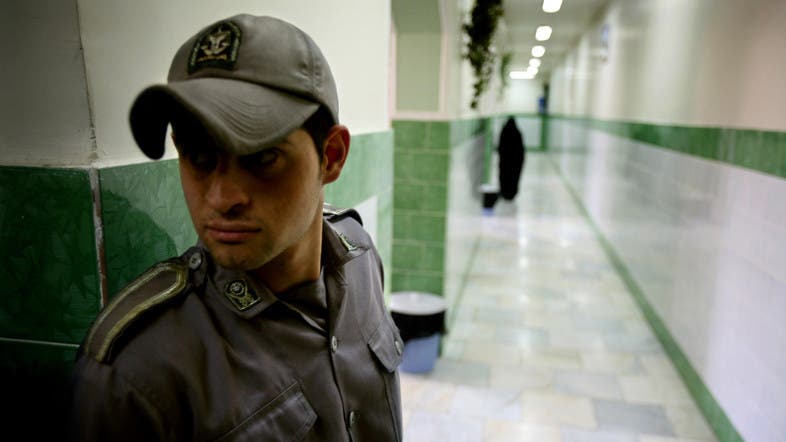
By Tony Duheaume
Special to Al Arabiya EnglishSunday,
sunday, 30 July 2017
The Iranian regime lives in
constant fear of an uprising to overthrow it. Such is its paranoia where
opposition groups are concerned it has spent the whole period of its existence,
eliminating dissenters.
The approach to any form of
opposition shows how insecure
this regime has become. But as far as extreme brutality is concerned, it could
not be more prevalent than that of the regime’s treatment of dissidents at Evin
Prison, where guards use torture to humiliate their captives before executing
them.
Through the despicable acts taking place here, the
lack of humanity shown by the prison authorities toward all those who speak out
against the regime, mirrors the insecurities of the entire state.
Located at the foot of the
Alborz mountains in northern Tehran, Evin Prison was originally constructed in 1972, under
the reign of Mohammad Reza Pahlavi. It was then operated by his infamous
security and intelligence service (SAVAK).
Opponents of the Shah
Opponents of the Shah
Thousands of political
prisoners were incarcerated there during that period, including many supporters of the
Peoples Mojahedin Organisation of Iran (PMOI/MEK), fierce opponents of the
Shah, and it was from this point on, its reputation of hell on earth had begun.
With Evin Prison being one
of the most notorious prisons in the world, just the mention of its name conjures up emotions of
fear and foreboding in the hearts of ordinary Iranian citizens, as it has
become synonymous with political repression, mass hangings and torture.
This infamous place is
where those entering
find themselves at the mercy of brutal prison guards, who at this point in
time, operate under the control of the Islamic Republic of Iran’s Secret
Service (VAVAK).
 |
| Female prison guards walk along a corridor in Tehran's Evin prison June 13, 2006. (Reuters) |
No legal representation
Female prison guards walk
along a corridor in Tehran's Evin prison June 13, 2006. (Reuters)
No legal representation
Teachers, writers,
journalists, students, lawyers and academics, in fact anyone who speaks out
against the regime, can find themselves thrown into Evin Prison. After trials
without legal representation, the accused are found guilty of vague crimes on erroneous
evidence, and are either condemned to serve long prison sentences.
Although the Iranian regime
has continuously denied it, Evin Prison is known to be a virtual torture
factory, where countless numbers of inmates have met their fate. Due to the number of intellectuals
imprisoned within its walls, the prison has been nicknamed Evin University.
With Evin being a prison
that is extremely overcrowded, hygiene is poor and in Iran’s sweltering hot
summers, the heat can reach up to 45 degrees Celsius. There is no form of air conditioning, and
the air within cells becomes rank with sweat and human waste. Water quality is
bad and food comes in meagre portions and is barely edible. Medical facilities
are virtually non-existent.
Breaking resolve
Breaking resolve
This whole process is
designed to break the resolve of political prisoners, where the pressure for a
confession is kept up until the captive breaks his silence. Then designed to
add to this anguish, all contact with the outside world is cut off, family visits
and telephone calls are forbidden, and even the guards are ordered to be silent.
Countless numbers have been
driven insane by this treatment, many smashing their heads against the wall of
their cell in anguish, while others have attempted suicide, but such is the security at Evin, no
prisoner has been known to have escaped.
Inside Evin’s fetid
dungeons, there are vents on the wall opposite the window, where a sturdy metal
door stands, and at the bottom of the door is fitted a flap, for the prison
guard to slide food through to the prisoner, while at the top of the door there
is a flap used for
communication.
One group of prisoners that
has suffered the most at Evin Prison is the PMOI/MEK, thousands of its members
have been held there over the years since the revolution.
 |
| Iranian women prisoners sit inside their cell in Tehran's Evin prison June 13, 2006. (Reuters) |
The 1988 massacre
Iranian women prisoners sit
inside their cell in Tehran's Evin prison June 13, 2006. (Reuters)
The 1988 massacre
With countless numbers
having been incarcerated at the time of the now infamous 1988 massacre,
thousands of their number can be added to the 30,000 dissidents that were
murdered across Iran. This was done under the orders of the then Supreme Leader Ruhollah Khomeini
to execute all those who opposed his regime.
After the execution,
corpses would be transported in the dead of night to one of the numerous mass
graves, which came in the form of deeply dug channels, secretly excavated in various isolated
locations across the country, areas dubbed by their executioners as Lanat-Abad
(The Place of the Damned).
But to this very day,
nothing has changed at Evin. Untold abuses still take place, while the words of human rights
activists fall on deaf ears. Rather than denouncing the regime with the harsh
condemnation it rightly deserves, the world has virtually ignored the abuses
carried out in its prisons and on its streets, offering the leadership more in
the way of lucrative
transactions like the Iran Deal, rather than that of hard-hitting sanctions
that cut deep.
Disclaimer: Views expressed
by writers in this section are their own and do not reflect Al Arabiya
English's point-of-view.


No comments:
Post a Comment